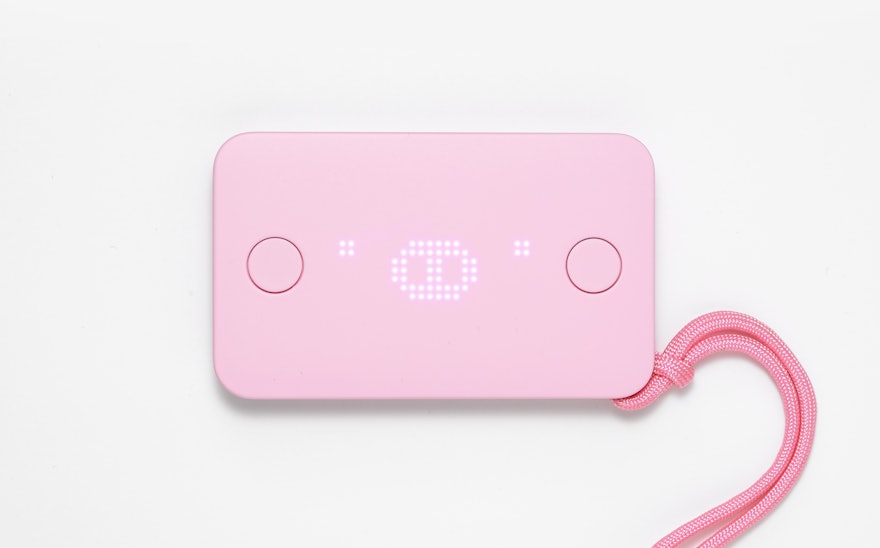Pigzbe is a fintech start-up that helps children and their families learn the principles of 21st century finance through cryptocurrency savings and hands-on play. It does this through a handheld ‘Piggy-Wallet’ and an educational app, which are powered by a new digital currency called ‘Wollo’.
Pentagram has partnered with Pigzbe to develop the industrial design and user experience of the ‘Piggy-Wallet’, a connected product that works as a notifier, controller and storage device for digital currency. Connecting to the smartphone app via bluetooth and also directly to the internet using Wifi, it provides a tangible interface to digital money, working as a 21st century replacement for the traditional piggy bank.
Working closely with Pigzbe co-founder and CEO Filippo Yacob, the industrial design team’s aim was to develop a highly compact product, close to the form factor of a credit card or smartphone. This departure from the larger toy-like form that is typical for connected piggy banks, makes the product portable and keeps material and energy use in manufacture and distribution to a minimum.
Pentagram translated Pigzbe's gamified digital experience into the physical world, deriving the feel of the interface buttons from game controllers. Similarly, the casing uses the same high-quality moulded plastic used in Lego bricks, treated with an ultra-matt paint finish to get exactly the right shade of pink.
Although the design is compact and reductive, a great deal of care and exploration was taken to optimise the user experience. Pentagram applied small magnets to the rear surface of the product, which allow the device to be stored on the fridge for easy viewing. In addition, a high quality paracord lanyard makes the product grab-able or allows it to be hung.
An LED matrix display is recessed beneath the product’s front surface, designed to shine through the plastic and communicate messages when needed. An integrated speaker and vibration motor enhance the user experience with sound and haptics. An onboard accelerometer allows motion and gestures to be used to interface with the device, such as shaking the device to check the balance.

